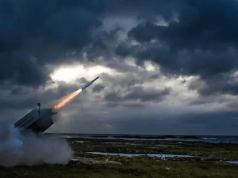
The Japan Maritime Self-Defense Force (JMSDF) has ordered the Raytheon-developed Joint Precision Approach and Landing System (JPALS) under an $8.6 million foreign military sale contract awarded via the US Navy in December 2022.
JPALS, which is a software-based, high-integrity differential GPS navigation and precision landing system, ensures enhanced safety and increased operational capability to equipped aircraft.
JPALS enables aircraft to approach and land on ships at sea while operating in all-weather conditions and is integrated on the F-35.
Japan does not have fully fledged aircraft carriers but is converting two Izumo-class helicopter destroyers into aircraft carriers capable of operating the F-35B fifth-generation fighter jets Japan is buying.
JPALS is scheduled to be deployed on the JMSDF’s JS Izumo in 2024.
“The urgency with which this contract was completed is a testament to our commitment to closely collaborate with our JMSDF partners, which is critical to the 2022 National Defense Strategy call to bolster robust deterrence in the INDO-PACOM [Indo-Pacific Command].” said Cmdr. Charles Steele, PMA-213 JPALS deputy program manager (DPM).
According to PMA-213 International Programs DPM, Casey Edinger, JPALS is a critical enabler of enhanced F-35B Joint Strike Fighter landing capabilities for coalition partners.
JPALS is currently being deployed on all US Navy aircraft carriers and amphibious assault ships. Japan joins the United Kingdom and Italy to procure JPALS, which is currently deployed on the UK Royal Navy’s HMS Queen Elizabeth, and the Italian Navy’s ITS Cavour.
JPALS has been supporting F-35B deployments on US Navy LH-class amphibious assault ships since 2016 and F-35C deployments on US Navy aircraft carriers since 2021.
“Leveraging existing production capabilities and historical cost/technical data optimized the use of diminishing supply sources, prevented significant price increases, and avoided any deployment schedule impacts,” said John Britt, PMA-213 procuring contracting officer.


























